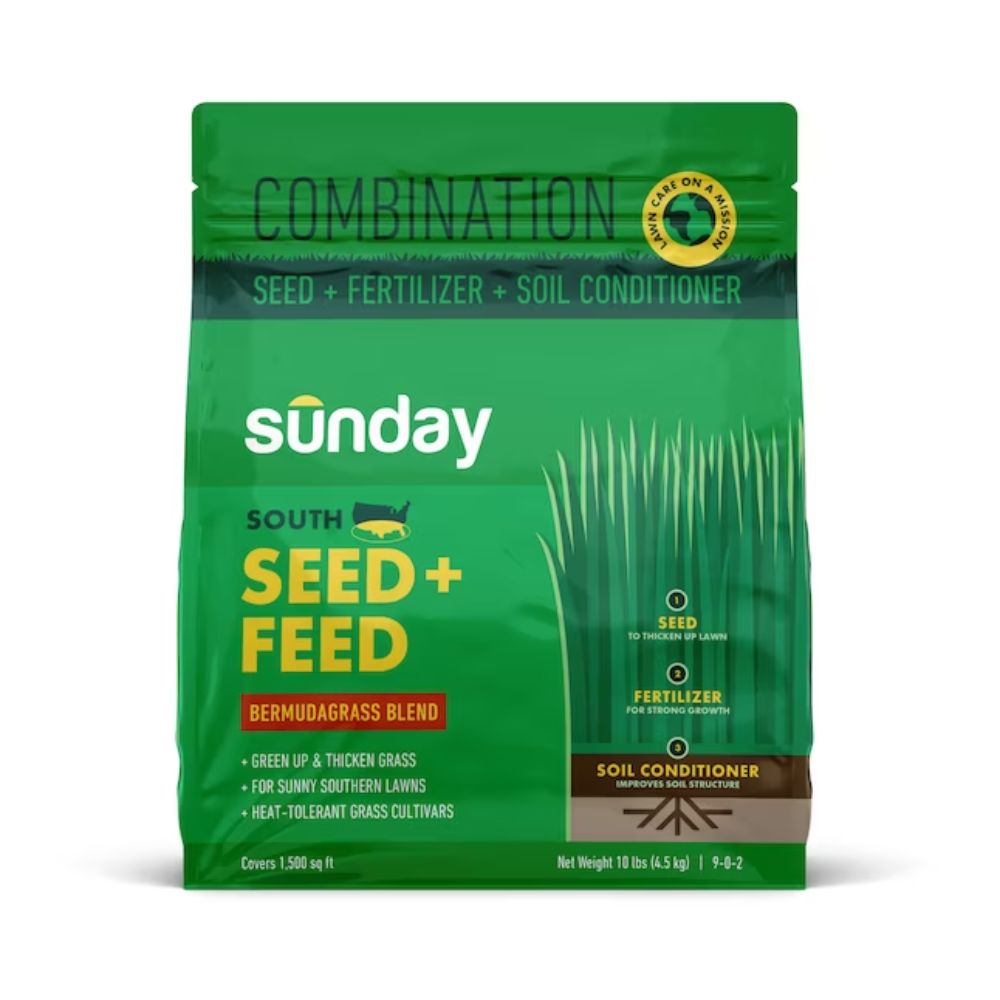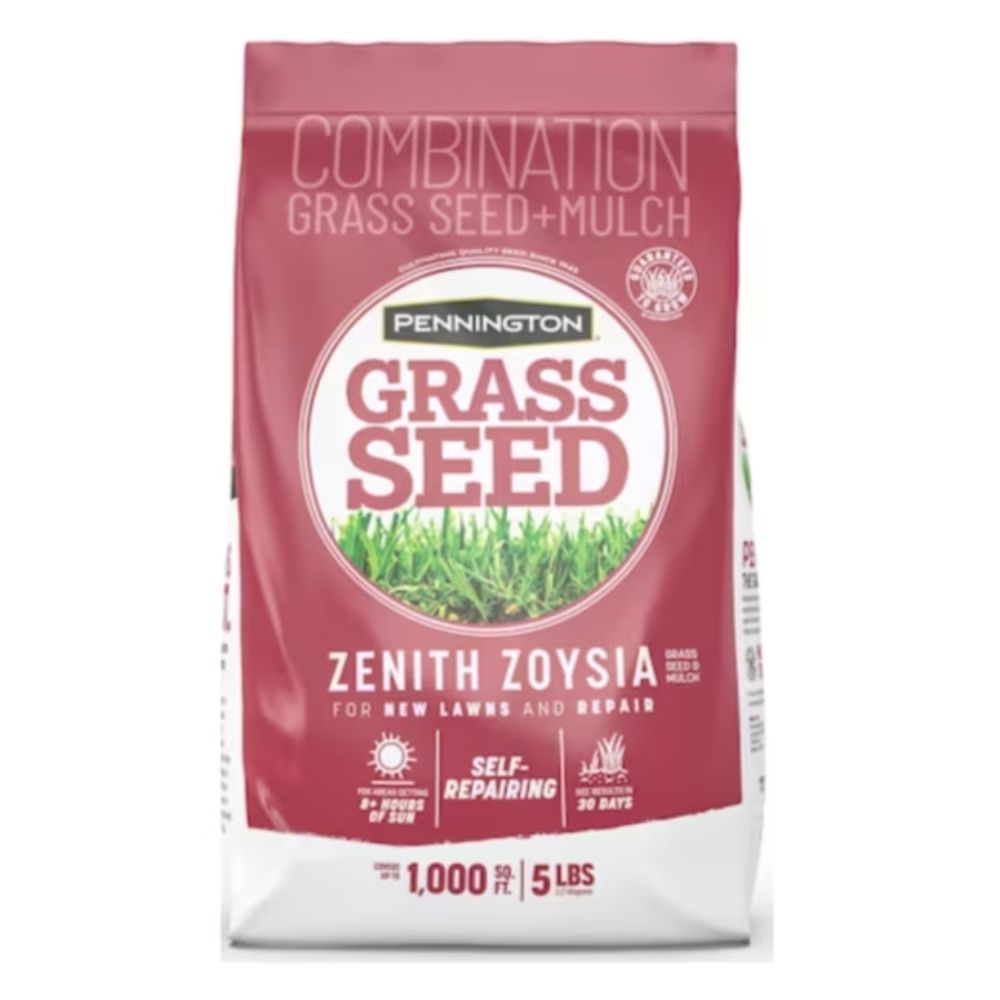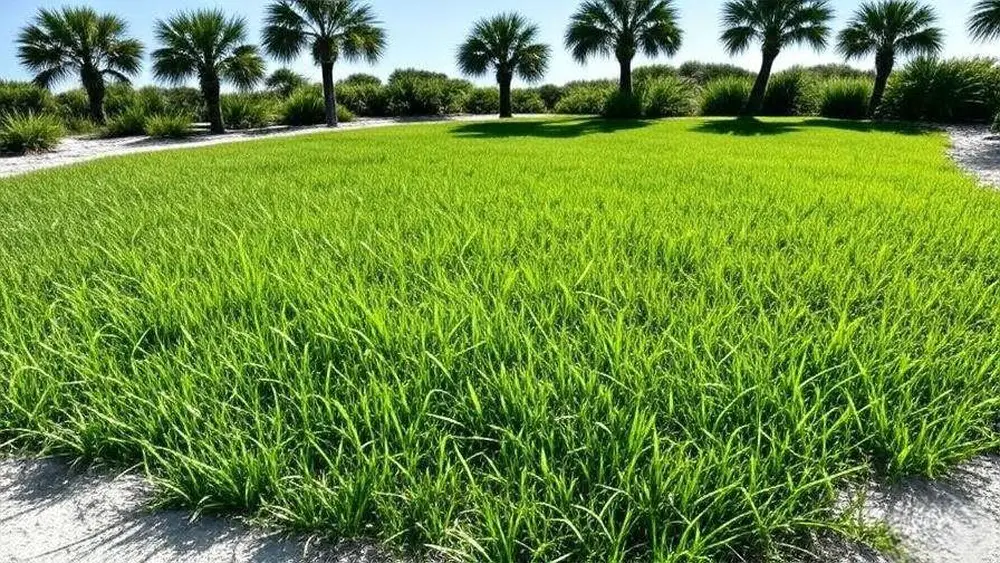Looking to have a lush, green lawn that stands out in Central Florida? Choosing the right grass seed is the key to making your yard look healthy and vibrant all year round.
But with so many options, how do you know which one will thrive in Florida’s unique climate? You’ll discover the best grass seed varieties designed specifically for Central Florida. By the end, you’ll have the confidence to pick the perfect seed that suits your yard and lifestyle.
Ready to transform your lawn? Let’s dive in.
Top Grass Types For Central Florida
Choosing the right grass seed for Central Florida is important. The climate here is warm and humid. Some grasses grow better than others. Picking the right type saves water and care. It also keeps your lawn green and healthy all year.
This guide covers the best grass types for Central Florida. These grasses fit the local weather and soil. They need less work and look great.
Warm-season Grasses
Warm-season grasses thrive in Central Florida’s heat. They grow fast in summer and slow down in winter. These grasses stay green for a long time. Common types include St. Augustine, Bermuda, and Zoysia. St. Augustine is popular for shade tolerance. Bermuda grass handles sun and drought well. Zoysia is dense and soft underfoot. These grasses need less water during hot months.
Cool-season Options
Cool-season grasses are less common in Central Florida. They prefer cooler temperatures and may struggle in summer. Ryegrass is the main cool-season choice here. It is often used to overseed warm-season grass in winter. Ryegrass stays green when other grasses turn brown. It provides color and covers bare spots. Use it only for short-term winter color.
Native Grass Varieties
Native grasses are adapted to Florida’s climate and soil. They require less water and fertilizer. Examples include Bahia and Centipede grass. Bahia grass grows well in sandy soils and resists drought. Centipede grass needs little mowing and grows slowly. These grasses blend well with the natural landscape. They support local wildlife and reduce maintenance.
Factors To Consider When Choosing Grass Seed
Choosing the right grass seed is important for a healthy lawn in Central Florida. Different grass types grow well under different conditions. Understanding key factors helps pick the best seed for your yard. These factors include climate, soil, sunlight, and water needs.
Climate Adaptability
Central Florida has a warm, humid climate. Grass seeds that handle heat and occasional cold work best. Some grasses thrive in summer heat but struggle in cooler months. Others stay green year-round. Choose seeds that match Central Florida’s weather patterns for strong growth.
Soil Compatibility
Soil type affects how well grass grows. Central Florida soil can be sandy or clay-like. Some grass seeds prefer sandy soil, while others need richer, loamy soil. Test your soil before planting. Pick seeds that fit your soil’s texture and nutrients for better results.
Sunlight Requirements
Grass needs the right amount of sunlight. Some types grow well in full sun. Others do better in shade or partial shade. Check how much sun your lawn gets each day. Select grass seed that matches your yard’s sunlight to avoid weak growth or bare spots.
Water Needs
Water is key for healthy grass. Some grass types need frequent watering. Others survive with less water. Central Florida can have dry spells and heavy rains. Choose grass seed that fits your watering habits and local rainfall. This keeps your lawn green and saves water.
Best Warm-season Grass Seeds
Warm-season grasses grow best in Central Florida’s hot and humid climate. They stay green and healthy during summer. These grasses handle heat, drought, and heavy foot traffic well. Choosing the right warm-season grass seed helps create a strong lawn. Below are the best options for this region.
St. Augustine Grass
St. Augustine grass is popular in Central Florida. It grows thick and lush, making your lawn soft and green. This grass tolerates shade better than many warm-season types. It needs moderate watering and does well in sandy soil. St. Augustine grass spreads fast, covering bare spots quickly.
Bermuda Grass
Bermuda grass is tough and grows fast. It loves full sun and handles drought well. This grass is perfect for lawns that get heavy use. Bermuda grass forms a dense carpet that resists weeds. It requires regular mowing to keep it neat and healthy.
Zoysia Grass
Zoysia grass grows slowly but creates a dense, soft lawn. It handles heat and drought very well. This grass tolerates both sun and some shade. Zoysia grass resists weeds and recovers quickly from damage. It needs less water than many other warm-season grasses.
Top Cool-season Grass Seeds For Transitional Areas
Cool-season grasses grow best in areas with mild winters and warm summers. Transitional areas, like Central Florida, face unique challenges. The climate swings between hot and cool, so grass must adapt well. Choosing the right cool-season grass seed helps keep lawns green and healthy year-round.
Cool-season grasses thrive in cooler months. They slow down in summer but recover quickly in fall. These grasses are perfect for overseeding warm-season lawns to keep color in winter. Below are popular cool-season grass seeds ideal for Central Florida’s transitional climate.
Fescue Varieties
Fescue is a popular cool-season grass. It grows deep roots and handles drought well. Tall fescue is common, offering thick, green blades. It tolerates shade better than many grasses. Fine fescues, like chewings and creeping red fescue, work well in shady spots. Fescue types resist disease and recover fast from wear. They stay green longer in fall and winter. Fescue adapts to Central Florida’s mild winters nicely.
Ryegrass Options
Ryegrass grows quickly and germinates fast. Perennial ryegrass is best for overseeding. It creates a dense, bright green lawn. Ryegrass handles cold well but fades in summer heat. It mixes well with fescue for a balanced lawn. Ryegrass seeds are affordable and easy to find. They add color and cover bare spots quickly. Ryegrass works great for winter lawns in Central Florida.
Seeding Tips For Central Florida Lawns
Planting grass seed in Central Florida requires special care. The climate and soil need the right approach for healthy lawns. Following simple seeding tips will help your grass grow strong and green. Proper timing, soil work, and seeding methods all affect success.
Best Planting Times
Plant grass seed during warm months. Late spring to early summer suits most grass types. The soil is warm enough for seeds to sprout quickly. Avoid planting in cold or very dry months. Seeds need moisture and warmth to grow well.
Soil Preparation
Prepare soil before planting. Remove weeds and rocks from the area. Loosen the soil to a depth of 4 to 6 inches. Add organic matter or fertilizer to boost soil health. Smooth the surface to help seeds make good contact.
Seeding Techniques
Spread seeds evenly for a full lawn. Use a seed spreader for large areas. Lightly rake the soil to cover seeds with a thin layer of dirt. Water gently but deeply after planting. Keep soil moist until grass sprouts and grows strong.

Credit: www.bobvila.com
Maintenance Practices For Healthy Grass
Maintaining healthy grass in Central Florida requires regular care. Proper maintenance keeps your lawn green and thick. It also helps grass fight pests and diseases. Simple habits make a big difference over time. Focus on watering, fertilizing, and mowing for the best results.
Watering Schedules
Water grass deeply but less often. This encourages strong roots. Early morning is the best time to water. Avoid watering in the heat of the day. It causes water to evaporate quickly. Aim for about one inch of water per week. Adjust based on rainfall and soil type.
Fertilizing Guidelines
Use fertilizer suited for Central Florida grass types. Apply fertilizer during the growing season only. Follow package instructions carefully to avoid overfeeding. Split fertilizer into two or three applications yearly. Too much fertilizer can harm your lawn. Choose slow-release fertilizers for steady nutrition.
Mowing Tips
Keep your mower blades sharp for clean cuts. Mow regularly, but never cut more than one-third of the grass height. Taller grass shades roots and holds moisture better. Set mower height between 2.5 to 3.5 inches. Leave grass clippings on the lawn to add nutrients back.
Common Grass Problems And Solutions
Growing grass in Central Florida can be challenging. Many common problems affect grass health and appearance. Understanding these problems helps keep your lawn green and strong. This section covers pests, diseases, weeds, and drought issues. It also offers easy solutions to protect your grass.
Pests And Diseases
Pests like chinch bugs and armyworms often attack Florida lawns. They suck sap and damage grass blades. Look for brown patches or thin grass areas. Use insecticides labeled for lawn pests carefully. Beneficial insects, like ladybugs, help control pests naturally.
Diseases such as brown patch and dollar spot also harm grass. They create spots or rings on the lawn. Proper watering and mowing reduce disease risks. Fungicides may be needed for severe cases. Removing dead grass helps prevent spread.
Weed Control
Weeds compete with grass for water and nutrients. Common weeds include crabgrass, dollarweed, and nutsedge. Pull small weeds by hand to avoid herbicide use. Apply selective herbicides to kill weeds without harming grass. Regular mowing keeps weeds from growing tall and producing seeds.
Dealing With Drought
Central Florida can have dry spells that stress grass. Grass turns brown and feels dry during drought. Water grass deeply but less often to encourage deep roots. Early morning watering reduces evaporation. Use mulch around plants to keep soil moist. Choose drought-tolerant grass types for better survival.

Credit: www.bobvila.com
Where To Buy Quality Grass Seed In Central Florida
Finding the right place to buy quality grass seed in Central Florida matters. Good seed ensures a healthy, green lawn that grows well in the local climate. This section covers trusted sources for buying grass seed near you and online.
Local Nurseries
Local nurseries offer grass seeds suited for Central Florida’s weather. Staff can guide you on the best seed types for your lawn. You can see the seed packaging and ask questions in person. Many nurseries carry popular varieties like St. Augustine and Zoysia. Buying locally supports small businesses and saves shipping time.
Online Retailers
Online stores provide a wide range of grass seeds with delivery to your door. These sites often have detailed descriptions and customer reviews. You can compare prices and find bulk options easily. Some trusted online retailers specialize in Florida-friendly grass seeds. Always check the seller’s reputation before ordering.
Seed Quality Checks
Check the seed label for purity and germination rates. Higher purity means fewer weeds and better grass growth. Germination rate shows the percentage of seeds that will sprout. Look for seeds tested by official organizations for quality assurance. Avoid seeds with outdated packaging or unclear information.

Credit: www.bobvila.com
Frequently Asked Questions
What Is The Best Grass Seed For Central Florida Lawns?
The best grass seed for Central Florida is Bahia grass and St. Augustine. These grasses thrive in hot, humid conditions and resist pests. They provide a lush, green lawn with minimal maintenance in Central Florida’s climate.
How Do I Choose Grass Seed For Central Florida Soil?
Choose grass seed suited for sandy, well-drained soil common in Central Florida. Bahia and Zoysia grass seeds work well. Consider drought tolerance and shade resistance for optimal growth and lawn health.
When Is The Best Time To Plant Grass Seed In Central Florida?
The best time to plant grass seed in Central Florida is spring through early summer. Warm soil temperatures help seeds germinate faster. Avoid planting in colder months to ensure strong grass establishment.
How Much Grass Seed Do I Need For Central Florida?
Calculate grass seed based on lawn size. Generally, 1 to 3 pounds of seed covers 1,000 square feet. Follow seed packaging guidelines for specific grass types suited to Central Florida.
Conclusion
Choosing the right grass seed helps your lawn grow strong and green. Central Florida’s warm climate suits certain seeds best. Bermuda, Zoysia, and St. Augustine thrive here. Each type has unique care needs and benefits. Plant seeds that match your soil and sunlight.
Water regularly and mow at the right height. A healthy lawn invites outdoor fun and relaxes the mind. Start with good grass seed to enjoy a beautiful yard all year. Simple steps lead to great results. Your perfect lawn is within reach.

